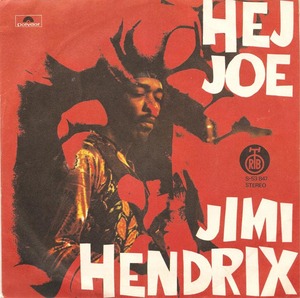Fact #118237
When:
Short story:
 The Jimi Hendrix Experience tape Hey Joe for the popular British TV show Ready, Steady Go! Watching that performance is effects wizard Roger Mayer, who’d already built custom fuzz boxes for Jimmy Page and Jeff Beck, and would soon give Hendrix the Octavia octave-doubling device heard at the end of Purple Haze.
The Jimi Hendrix Experience tape Hey Joe for the popular British TV show Ready, Steady Go! Watching that performance is effects wizard Roger Mayer, who’d already built custom fuzz boxes for Jimmy Page and Jeff Beck, and would soon give Hendrix the Octavia octave-doubling device heard at the end of Purple Haze.Full article:
Chris Britton (The Troggs) : When we used to frequent the greasy spoon up Denmark St in 1966, we knew Mitch Mitchell as a short-haired mod. At the end of the year, we were on the edition of Ready Steady Go! on which the Experience made their tv debut.
Roger Mayer : I said, ‘Damn, this guy is incredible.' He was the epitome of what any rock guitarist should be - we had no one of that caliber in England.
Marc Bolan : It was amazing to watch him for the first time. Everyone else used to use backing tracks, but he was going to play live because they got him on the show the same day. I was in the control room with the producer, just sitting about, when they started Hey Joe, and this old lady really freaked out and said, ‘Turn the backing track down!’ because it was really loud. All the machines were shaking. And they said, ‘But there is no backing track’.
Chris Britton : They were miming, but both the music and the act were stunning, though I hardly recognised Mitch with this alarming Afro, just like Jimi’s. A few months later, you’d see that hairstyle everywhere, even back in Andover.
Rory Gallagher : Before Hendrix, Jeff Beck had distorted his guitar and so had Keith Richards, and there was distortion on the early 50s blues records. They didn’t use it as a technique but they had small amplifiers that were turned up very loud and it became part and parcel of the Chicago blues sound. In a way, Hendrix trimmed it and made it into an art form. He was fantastic but he wasn’t the first guy to use distortion.
(Source : interview with BBC Radio broadcaster Spencer Leigh, 1987)
Tweet this Fact
Roger Mayer : I said, ‘Damn, this guy is incredible.' He was the epitome of what any rock guitarist should be - we had no one of that caliber in England.
Marc Bolan : It was amazing to watch him for the first time. Everyone else used to use backing tracks, but he was going to play live because they got him on the show the same day. I was in the control room with the producer, just sitting about, when they started Hey Joe, and this old lady really freaked out and said, ‘Turn the backing track down!’ because it was really loud. All the machines were shaking. And they said, ‘But there is no backing track’.
Chris Britton : They were miming, but both the music and the act were stunning, though I hardly recognised Mitch with this alarming Afro, just like Jimi’s. A few months later, you’d see that hairstyle everywhere, even back in Andover.
Rory Gallagher : Before Hendrix, Jeff Beck had distorted his guitar and so had Keith Richards, and there was distortion on the early 50s blues records. They didn’t use it as a technique but they had small amplifiers that were turned up very loud and it became part and parcel of the Chicago blues sound. In a way, Hendrix trimmed it and made it into an art form. He was fantastic but he wasn’t the first guy to use distortion.
(Source : interview with BBC Radio broadcaster Spencer Leigh, 1987)